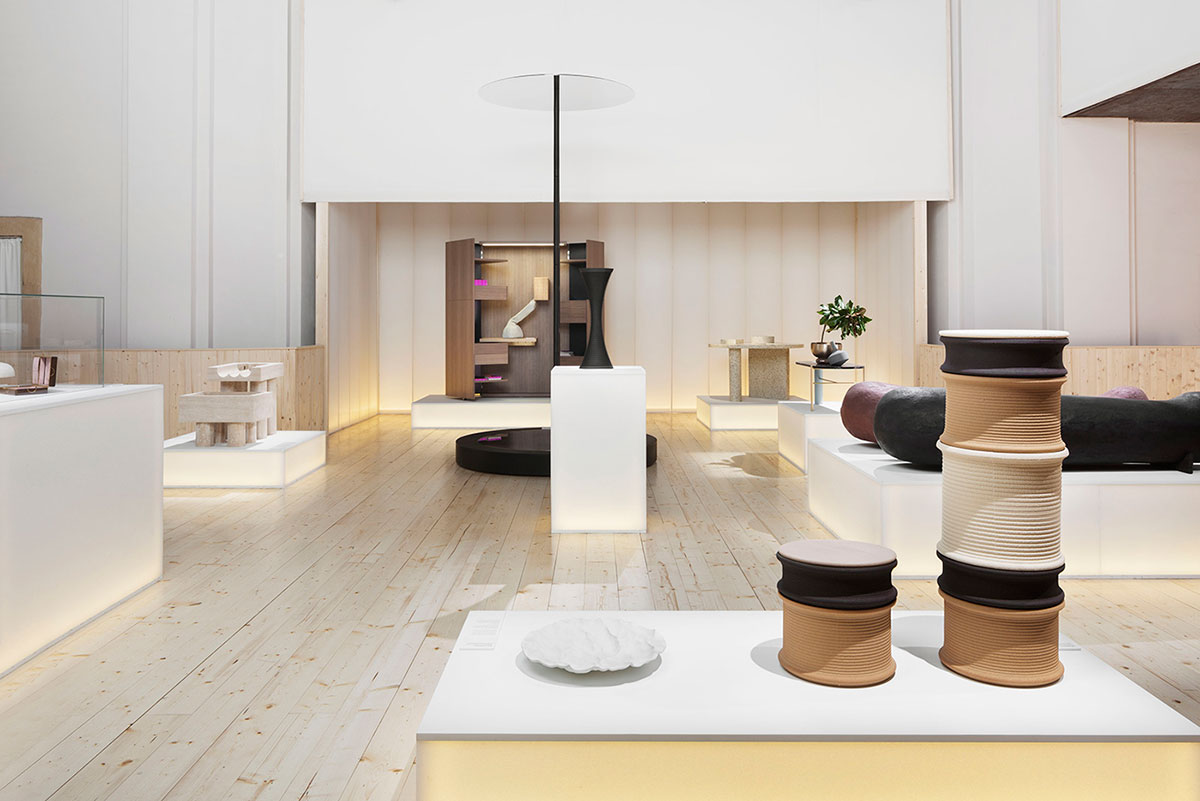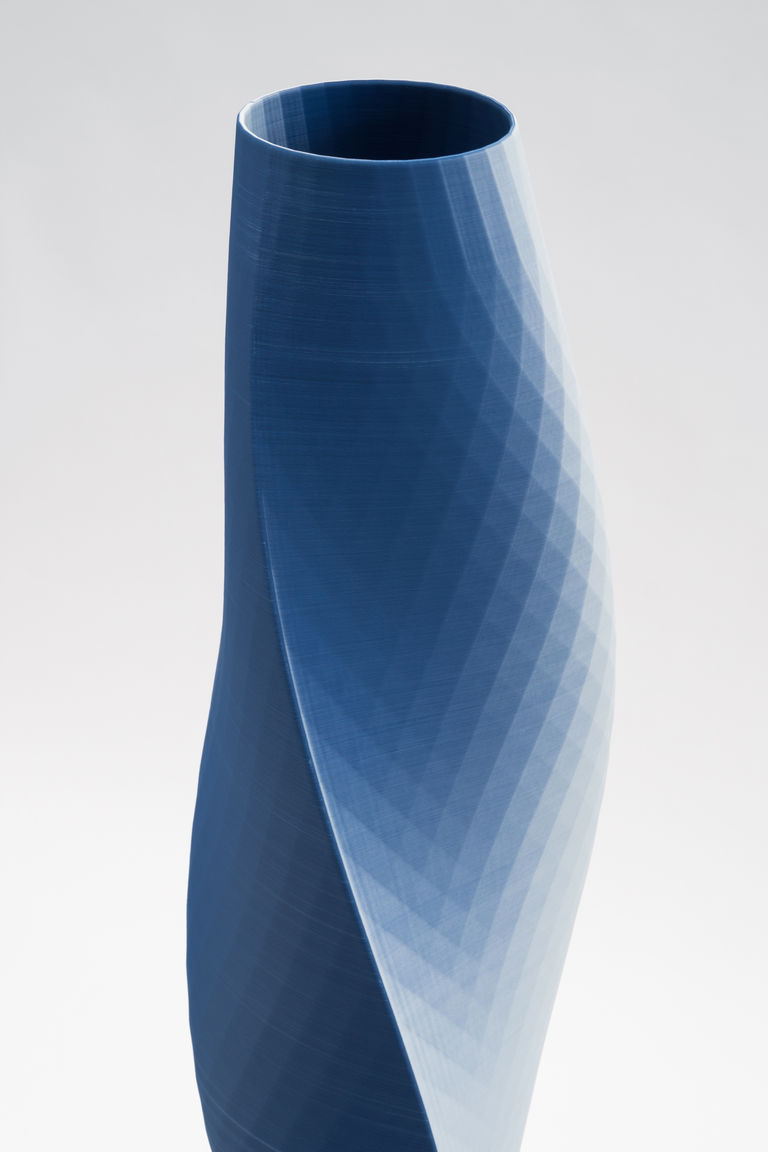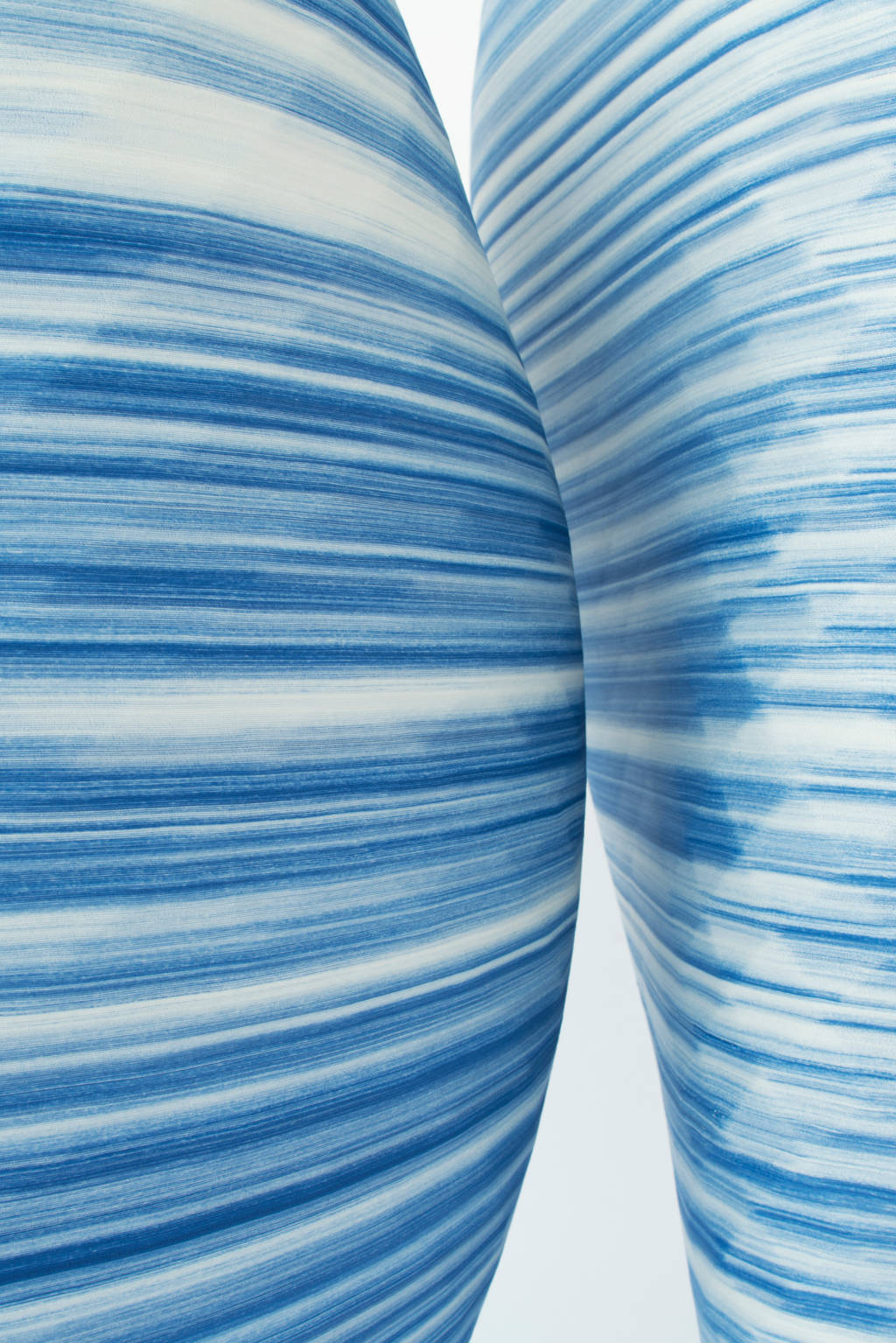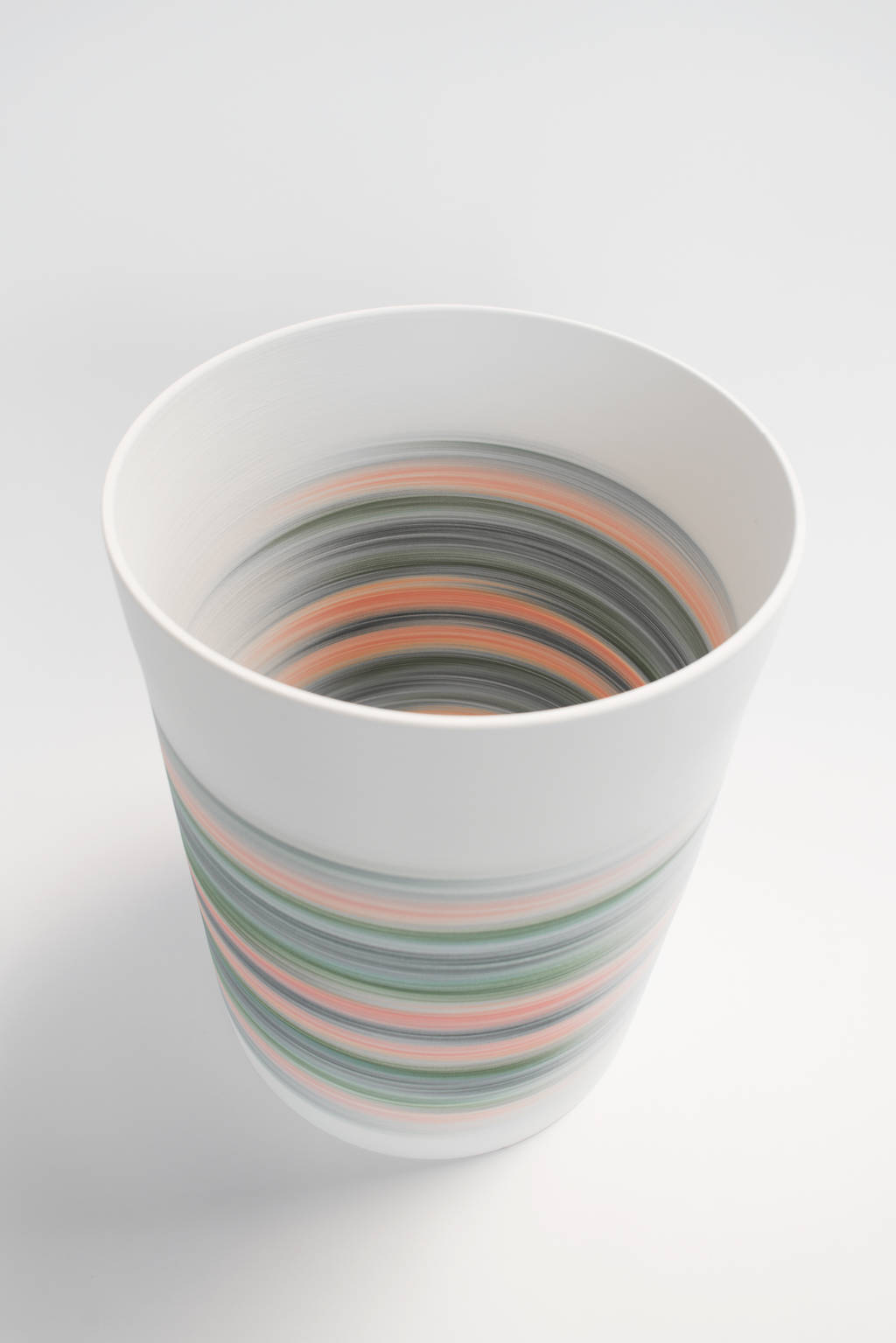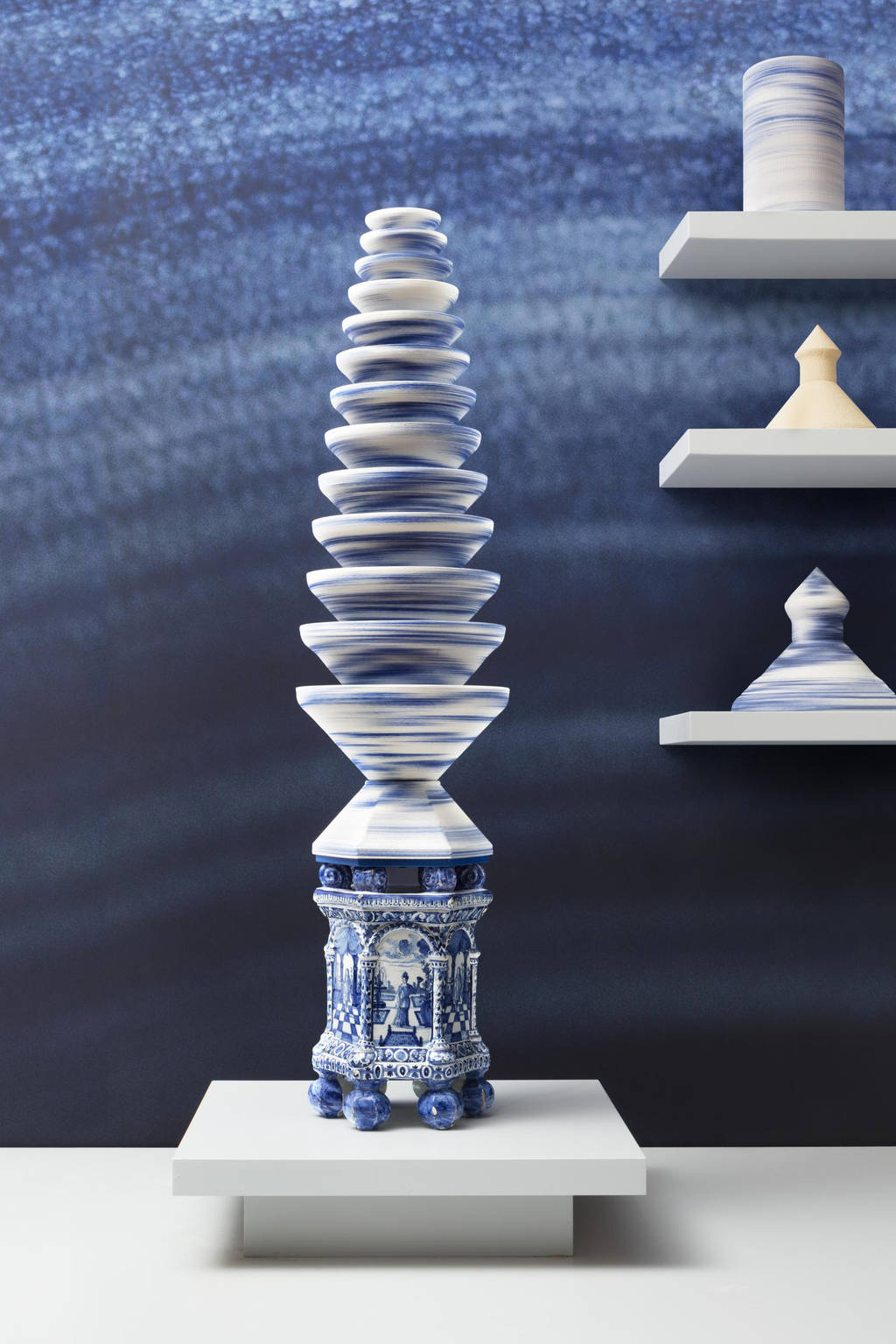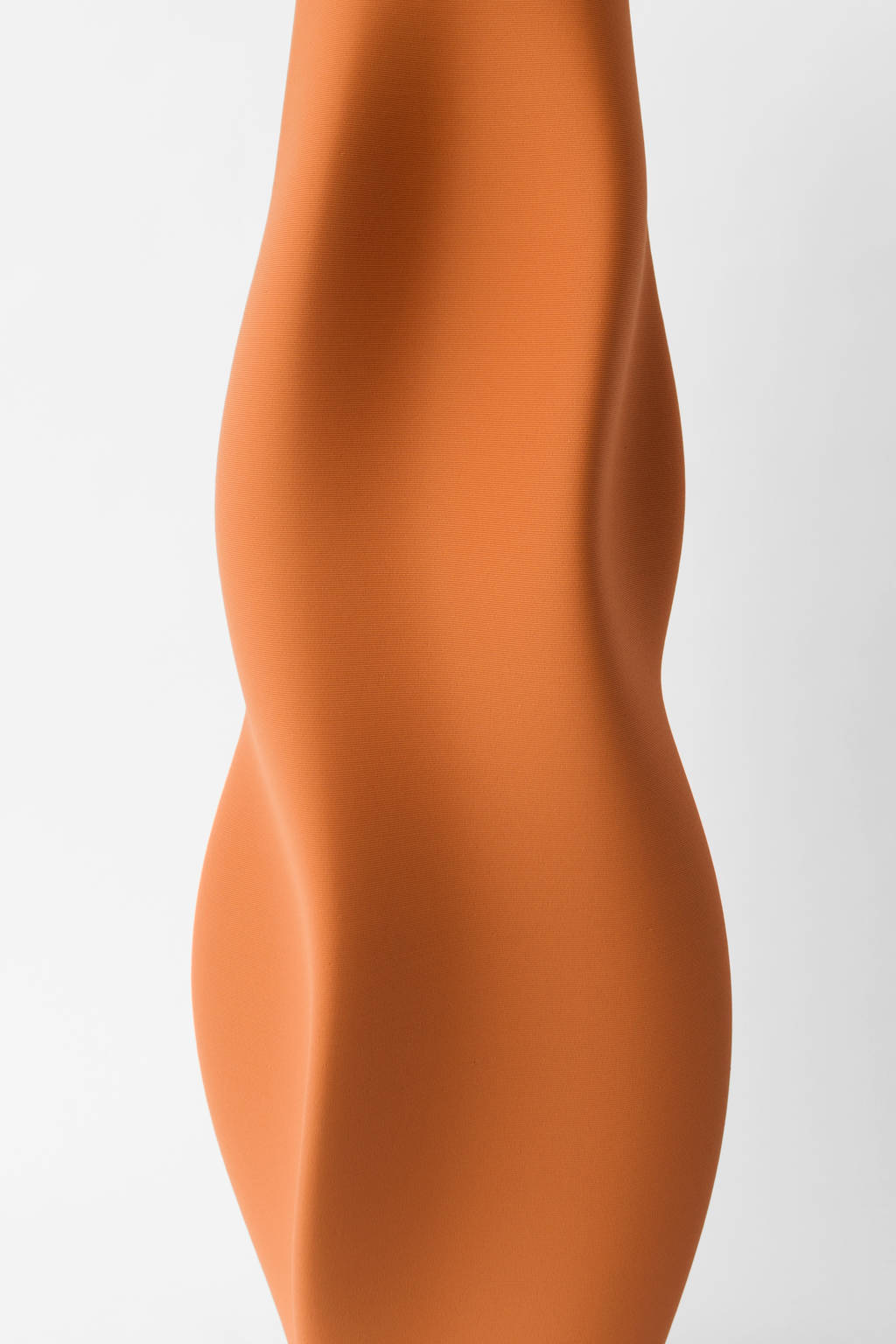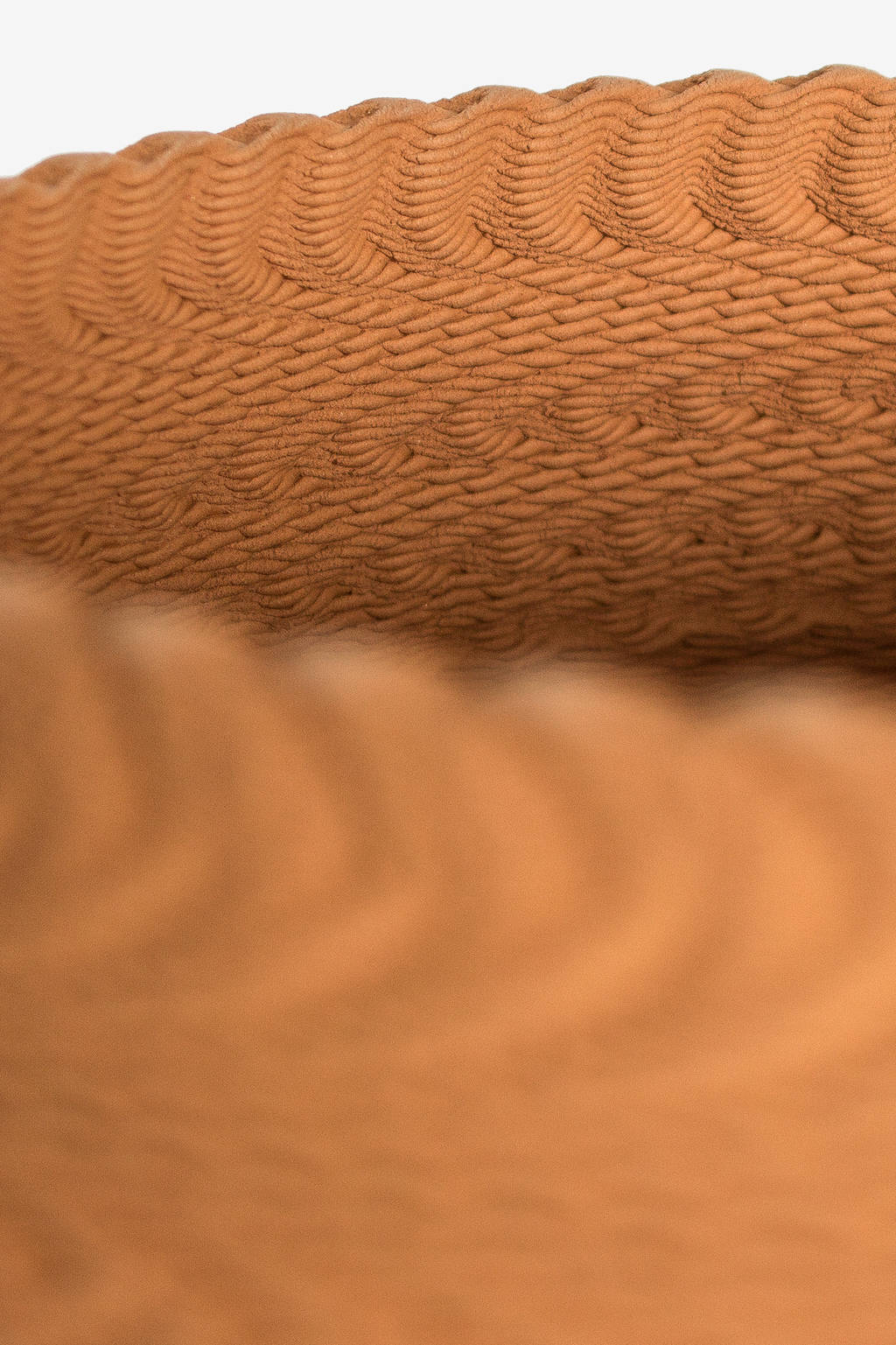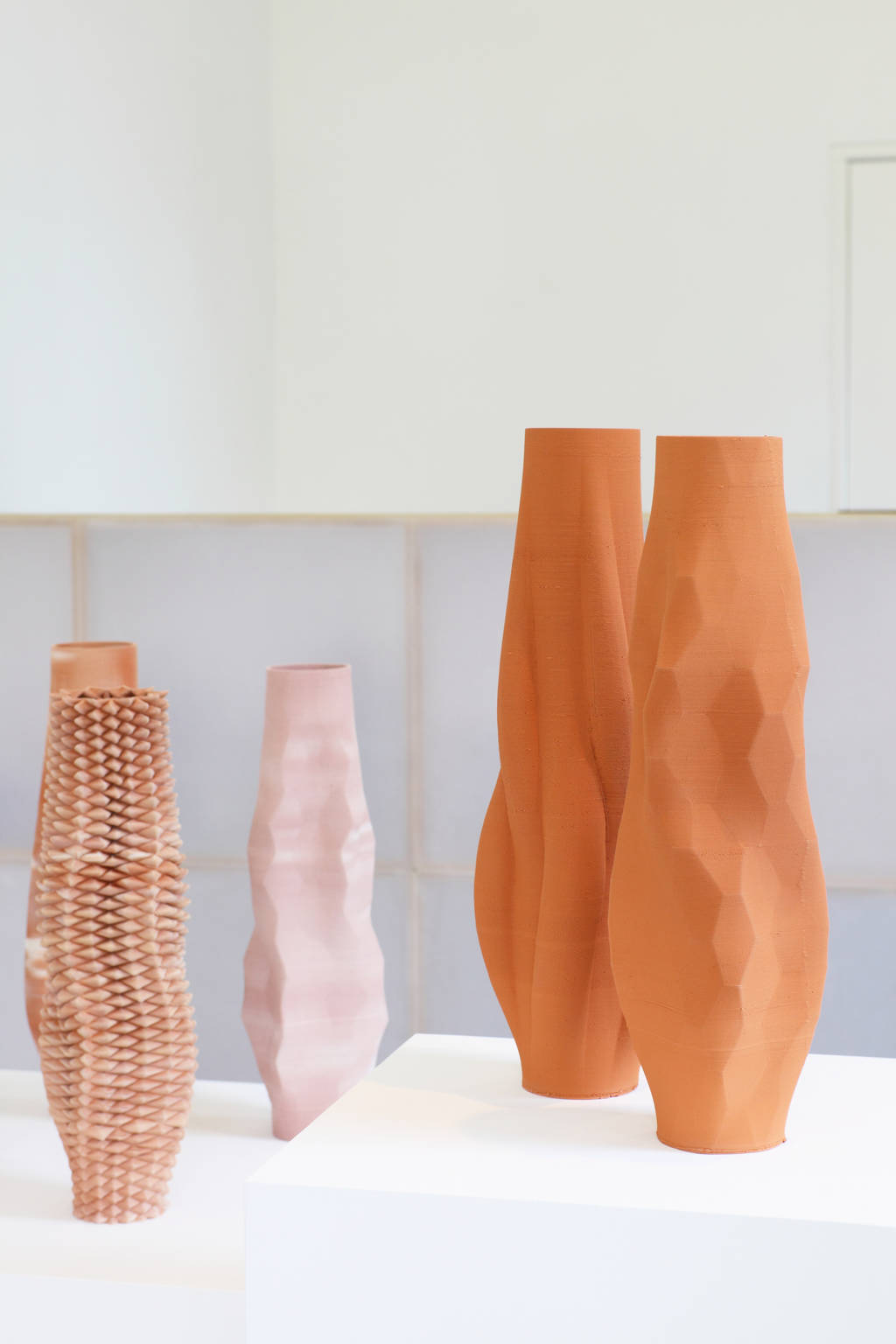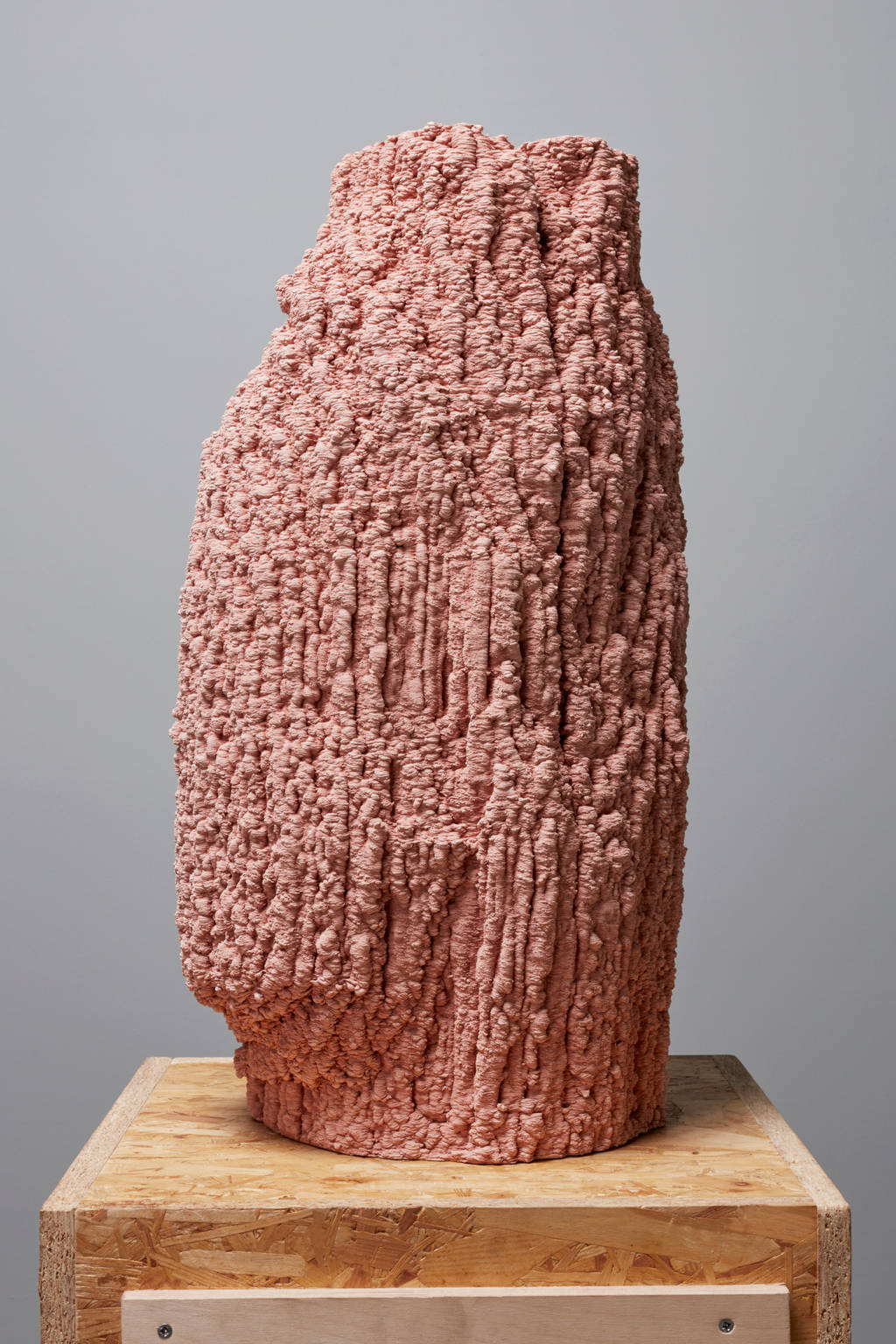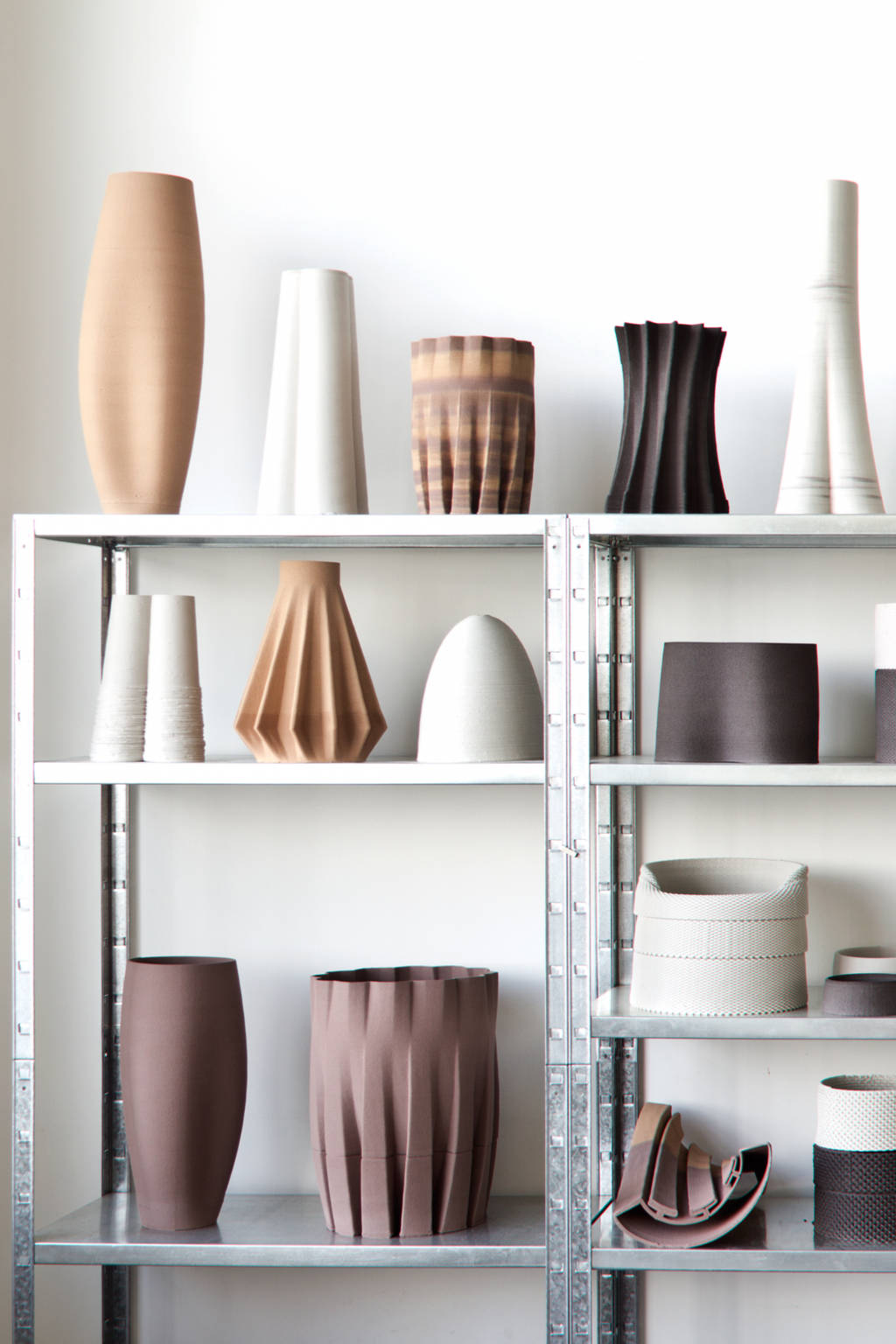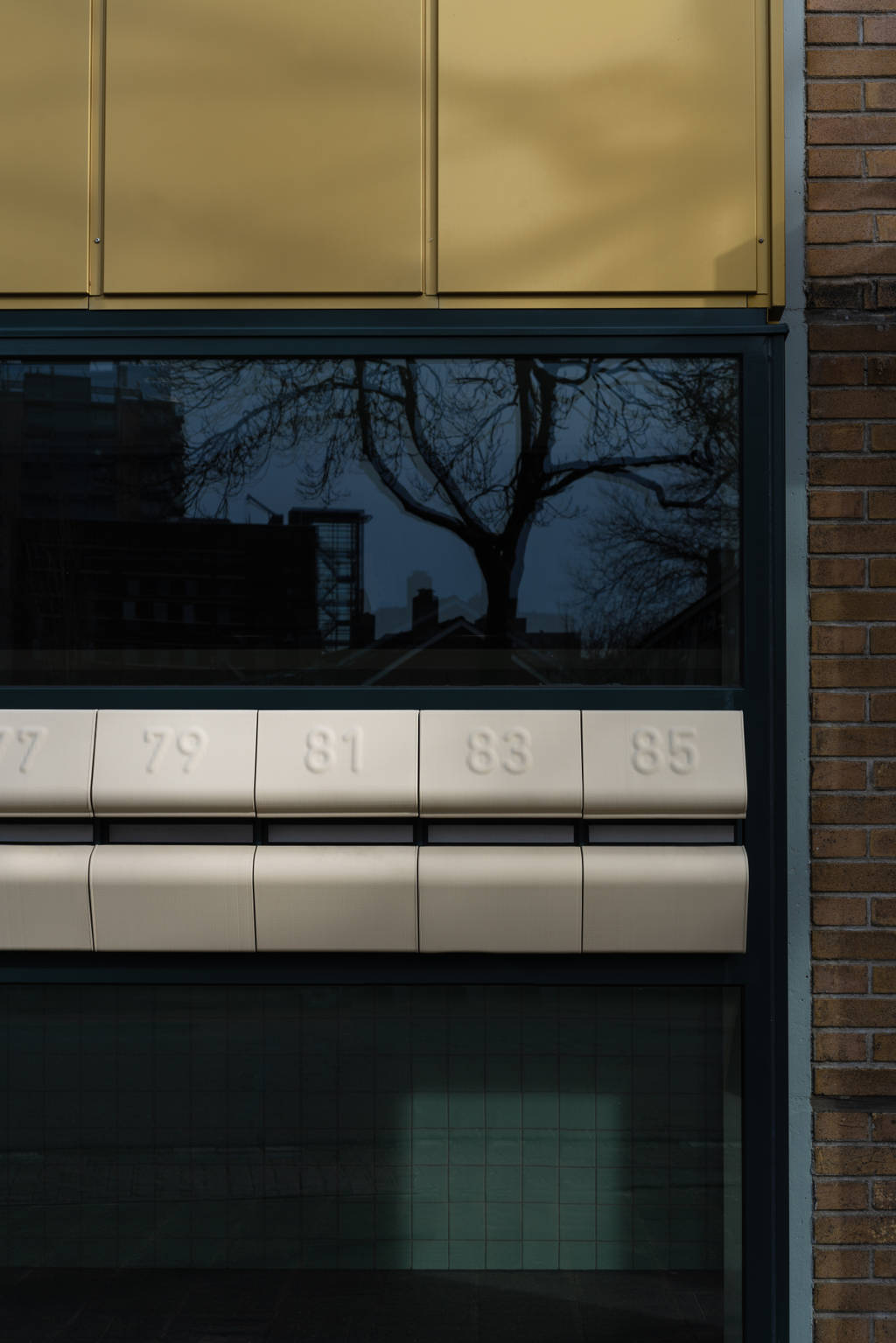Modular Column
Collaborating as designers, Tijmen Smeulders and Olivier van Herpt explored 3D printing techniques to create a series of clay vessels whose shapes were informed by the elements of religious architecture. The modular objects they created can be stacked to make bigger volumes, serving as containers or as decorative totems.
The two Dutch designers produced clay prototypes in a variety of sizes before settling on a 38cm-diameter version that comes in different heights. The modules are produced with Van Herpt's ceramic 3D-printing machine, which can produce objects up to 1m tall with a diameter of 60cm.
The result is a sculptural piece that gives the spiritual theme of the exhibition a structural interpretation. ‘We saw a clear link between the column as an architectural element found in churches and temples, and this year’s subject,’ notes Smeulders. ‘This topic has traditionally been expressed in the strongest and most permanent way through architecture,’ echoes Van Herpt. The pair were also keen to explore just what ‘handmade’ means in contemporary design.
The design of their modular column was directly informed by the restrictions of Van Herpt’s 3D-printing machines. The ambitious scale of their project meant that they had to create the piece out of individual modules. The circular shapes that compose the column are created as separate parts; each module size is identified by a specific colour and texture that suggest an alternative life as a useful domestic object.




